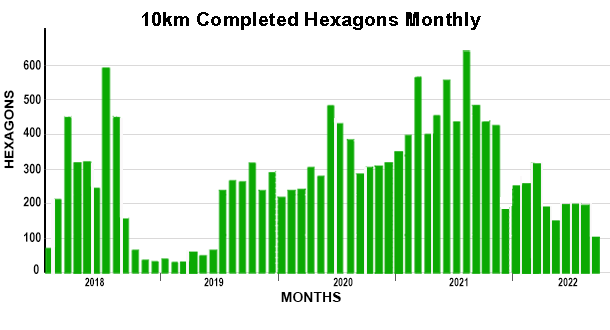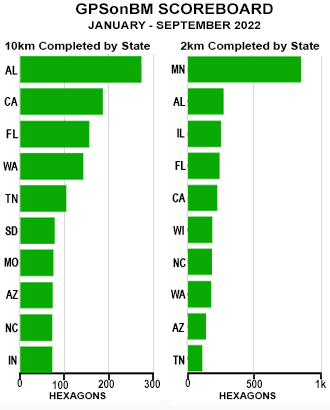New NSRS Modernization Release Timeline: Mid-2025
NGS will release the data and a limited set of tools for the Modernized NSRS by mid-2025. See the July 2022 edition of the NSRS Modernization News or the June 9th, 2022 NGS Webinar “It’s 2022, Are You Done Yet?” for more information on the revised schedule and what will, and will not, be included in that release.
Given this revised timeline, NGS will keep the doors open for submissions of GPSonBM data for the transformation tools through the end of September 2023. Data submitted before the doors are closed will be considered for use in the 2020.00 Reference Epoch Coordinate (REC) adjustments. Data that passes through the adjustment quality-control process will be used to assign REC coordinates on marks in the Modernized NSRS. Marks with valid coordinates in both NAVD 88 and NAPDG2022 will be used to create the transformation grids that will be released with the modernized system.
Once released, the transformation grids will remain static and the points used will serve as the definitional points in the NAVD88-NAPGD2022 transformation. New GPSonBM observations submitted to NGS after September 2023 will have RECs and Survey Epoch Coordinates (SECs) computed in the new frames, however they will not be added into the set of points that define the transformations.
Learn OPUS Projects and Submit GNSS Projects to NGS
Another important decision that NGS announced this summer is the continued development of OPUS Projects to support the Modernized NSRS. This means that investing in learning OPUS Projects now is a tangible action that geospatial professionals and related agencies can take to prepare for working in the Modernized NSRS when it’s released. OPUS Projects 4.0 provides robust functionality to upload and process GPS campaign style surveys, perform adjustments, and submit them to NGS for archiving in the NSRS Database and the creation of official NGS datasheets.
NGS has released an updated OPUS Projects User Guide and we offer both in-person and online classes, recorded training videos, and other training resources, all for free. Note that to submit your projects to NGS you must start by completing an NGS Survey Project Proposal to get a project tracking number, and you must describe each survey mark by creating description files in the NGS software WinDesc.
We encourage you to participate in the beta testing of OPUS Projects 5.1, which provides the ability to collect and submit a series of 5 minute observations on marks using Real Time Network (RTN) or Real Time Kinematic (RTK) data instead of the traditional 4+ hour static occupations. This latest version of the NGS flagship GNSS data processing tool will change the game for surveyors and the broader geospatial community by enabling data submission to NGS and access to the NSRS through much shorter GNSS data collection times. Contact your NGS Regional Geodetic Advisor for more information about training options or planning projects in your area.
Recent Progress
GPSonBM data submission volumes have remained lower this year than they have been over the past 2 years. However, with another year to go now and new tools to use to collect and submit data, there is plenty of time to make a major impact on the quality of the transformation tool in many communities around the country.


Here’s a shout-out to partners in Alabama who have been consistently filling in data gaps across their state this year. In fact, while the numbers may be down for now, the interest levels and overall GPSonBM chatter seems to be growing. Now that the future of NSRS Modernization is coming into clearer focus, word is getting around that participating in GPSonBM is one very important way that the geospatial community can prepare now to take full advantage of the benefits of the Modernized System when it is released.
The good news is that we are not concerned about this slow down (yet) because we are banking on the idea that people are starting to plan to collect and submit RTK/RTN data through beta OPUS Projects 5 this year. More on that below…
|
Take Home Points

- NGS now has a revised schedule to release the Modernized NSRS by mid-2025
-
GPSonBM data for the transformation tools will be accepted through September 2023
- NGS will continue to accept GPSonBM and other GNSS data in perpetuity for use in subsequent Reference Epoch Coordinate and Survey Epoch Coordinate computations. (See Blueprint #3 Working in the Modernized NSRS)
- NGS encourages users to learn OPUS Projects and beta test the new workflows for submitting RTK/RTN observations on more marks in less time
|
NGS tracks participation in this campaign, and we rely on partner participation to be successful. If you have an accomplishment you want to highlight, email NGS.GPSonBM@noaa.gov.
|